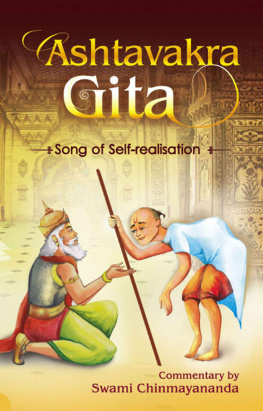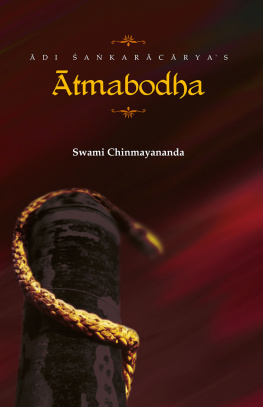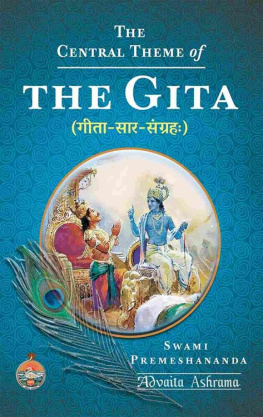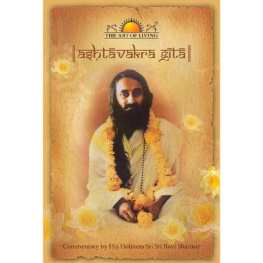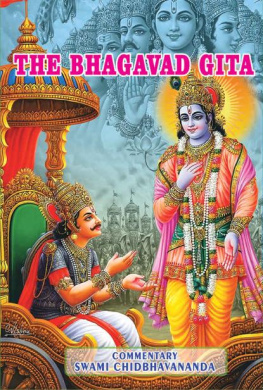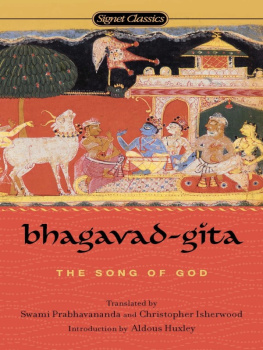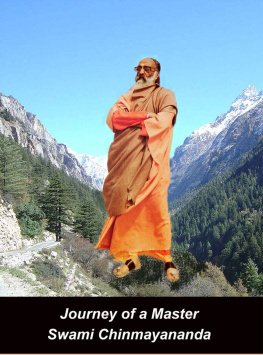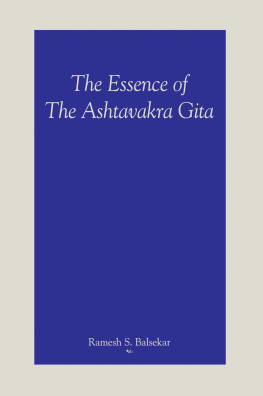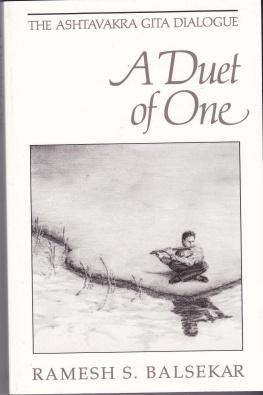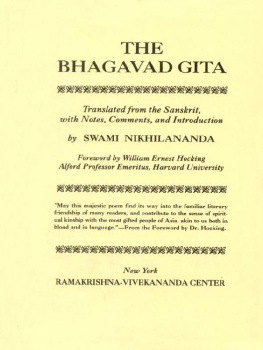Copyright Reserved Central Chinmaya Mission Trust
All rights reserved. No part (either whole or part) may be reproduced, copied, scanned, stored in a retrieval system, recorded or transmitted in any form or by any means, including but not limited to electronic and mechanical means, without the prior written permission of the publisher.
Published by:
Chinmaya Prakashan
The Publications Division of
Central Chinmaya Mission Trust
Sandeepany Sadhanalaya
Saki Vihar Road, Powai, Mumbai 400072, India
Tel.: +91-22-2803 4900
Email:
Website: www.chinmayamission.com
Distribution Centre in USA:
Chinmaya Mission West
Publications Division
560 Bridgetown Pike
Langhorne, PA 19053, USA
Tel.: 1-888-CMW-READ, (215) 396-0390 Fax: (215) 396-9710
Email:
Website: www.chinmayapublications.org
Designed by:
Chinmaya Kalpanam, Mumbai
Digitized by:
Chinmaya Digital Media, Mumbai
Contents
| Ch. No. | Subject Matter | Verses |
| 1 20 |
| 1 25 |
| 1 14 |
| 1 6 |
| 1 4 |
| 1 4 |
| 1 5 |
| 1 4 |
| 1 8 |
| 1 8 |
| 1 8 |
| 1 8 |
| 1 7 |
| 1 4 |
| 1 20 |
| 1 11 |
| 1 20 |
| 1 100 |
| 1 8 |
| 1 14 |
Transliteration and Pronunciation Guide
In the book, Devangar characters are transliterated according to the scheme adopted by the International Congress of Orientalists at Athens in 1912. In it one fixed pronunciation value is given to each letter; f, q, w, x and z are not called to use. According to this scheme:
Publishers Note
Chinmaya Prakashan has great pleasure in presenting the 3rd revised edition of Avakra Gt to all spiritual seekers.
In the earlier edition, readability was poor in small print. This aspect is taken care of in the revised layout. Keeping in view the high standing of this book in thought of Vednta, to help readers not knowing Sanskrit, transliteration has been added even to references.
In this revised edition, diacritical marks are used for transliteration of Sanskrit words in the verses as well as commentary. The English plural sign s has been added to the Sanskrit words directly without a hyphen. To be true to the Sanskrit text in transliteration, we have used Brhmaa for the first vara instead of the commonly used word Brahmin. It need not be confused with the term Brahman of the Vedntins.
A key to transliteration and pronunciation has been added in the beginning, while alphabetical index to lokas at the end of the book.
Sincere efforts have been made to eliminate errors and create a fresh and appealing design. The Chinmaya Sampadan and Chinmaya Kalpanam deserve compliments in bringing this revised edition and we hope seekers experience the depth of this profound Knowledge.
Chinmaya Prakashan
Publication Division of CCMT
6th July, 2016
Mumbai 400072
About Avakra-Gt
In communicating to the seekers the unsurpassing beauty and indefinable perfections of the Absolute, the Upaniads stammer, the Brahmastras exhaust themselves and the Bhagavad-gt hesitates with an excusable shyness. A theme, in dealing with which, even these mighty books of Hinduism are thus, at best, unsatisfactory. We must, in sheer gratitude, admire Avakra Sahit for the brilliant success it has achieved in communicating, through words, perhaps more clearly, the nature and glory of the supreme Reality, than by Prasthna Traya.
The student of this sahit is himself giving the autobio-data of the Liberated in life. We have here in this book a revealing autobiography of the saint, the Liberated in life in King Janaka.
Beyond all assertions and denial, beyond the concepts of bondage and Liberation, lies this realm of the Self, wherein there is neither the individual ego (jva), nor is there even the supreme Reality (Brahman)!
Swami Chinmayananda
General Introduction
Among the worlds classical works on contemplative experiences, Avakra-gt , which is sometimes called Avakra Sahit , is a unique textbook. It systematically deals with the mystical experiences of an individual in his flight to the transcendental peace and Bliss. It has been said that the thoughts of this Gt are compatible with the Dialogues of Plato and the Bhagavad-gt , as all of them truthfully record the universal insight and spiritual experiences which a seeker gathers during moments of his intense meditation.
As in Bhagavad-gt , here in Avakra-gt also, we find the subtle philosophical truths expounded in the form of a lucid dialogue between the King-seer (rja-i) Janaka, the disciple and Avakra, the Teacher.
Avakra-gt also known as Avakra Sahit is a short treatise on Advaita Vednta in the style followed in Upaniads meaning in the form of a dialogue between Avakra, the Guru and his disciple, the King-seer Janaka. This fascinating legend is vividly described in the epic, Mahbhrata where Mahari Lomaa narrates it to Dharmaputra Yudhihira, the eldest of Pava princes.
In general introduction and later in the commentary, it is repeatedly emphasised that Avakra-gt is meant only for those advanced sdhakas who have purified their minds through sdhan and are engaged in meditation. To such committed students alone would this book show light and be a true guide. To the unprepared, immature students, the subtle thoughts contained in this Gt can be explosively dangerous and result in erasing their faith entirely from the higher Reality.
Avakra in Sanskrit means aa meaning eight and vakra is crooked or curved with eight crooked (limbs). How he was cursed by his father while still in his mothers womb has been explained.
In Mahbhrata , the legend of Avakra is fascinating and vivid. When Avakra was in the womb of Sujt, his mother, his father, Kahor, a mighty student of the Vedas, used to read aloud the sacred maalas, each day late into the nights. The unborn genius, even from the womb, learnt the texts, and one day, the child from the womb suddenly cried out, Tut, Tut! Father, through your grace I have already learned all the Vedas, even while I am in my mothers womb. But I am sorry to say that you often make mistakes in your recitation. Enraged by this grave insult the father cursed his son and the boy was therefore born deformed with eight curvatures in his anatomy. As a result of the curse, he developed eight deformities like hunch-backed, hump, knock-knees, bow-legs, flat-footed and was, therefore, named Avakra.

